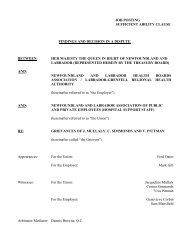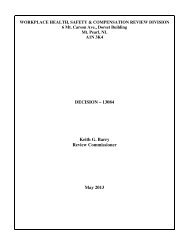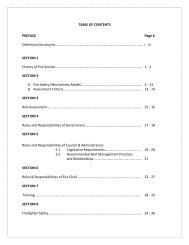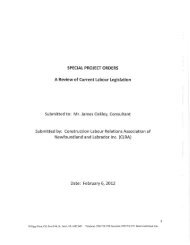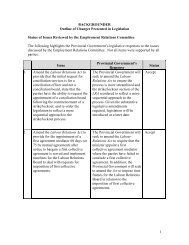Basic Level Pre-Course Reading
Basic Level Pre-Course Reading
Basic Level Pre-Course Reading
You also want an ePaper? Increase the reach of your titles
YUMPU automatically turns print PDFs into web optimized ePapers that Google loves.
Chapter 6<br />
Casualty Management<br />
6.3.2 Potential Impact of a CBRN Incident on Emergency<br />
Responders<br />
Many emergency responders have experienced personal, psychological or<br />
emotional trauma during their career. Mass casualty incidents generate stress<br />
on responders because there are never enough resources to provide optimal<br />
care. Difficult choices are made in a chaotic, possibly hazardous pre-hospital<br />
environment, information is scarce and the death rate may be high. Responders<br />
work knowing they will face post-incident scrutiny by administration, colleagues,<br />
families, coroners, lawyers, media, and the public.<br />
During a CBRN incident, responders must face unfamiliar challenges in<br />
situations where they have no experience. Unfamiliar and unknown factors will<br />
create fear. <strong>Pre</strong>ssure to quickly resolve the situation and to deal with the fact<br />
that mass casualties were produced intentionally adds to the psychological<br />
challenge.<br />
Emergency responders with discipline, training, and equipment will lead an<br />
effective community response. Stop, think, and take a deep breath before<br />
plunging in. “The first vital signs to control are your own.”<br />
6.3.3 Measures to take Before a CBRN Incident<br />
• Training and participating in response exercises are two of the best means of<br />
reducing the stress associated with responding to CBRN incidents.<br />
• Knowledge of CBRN agents (nature and effects) and standard response<br />
procedures will increase the responders’ sense of competence, confidence,<br />
and control.<br />
• Proficiency of the equipment and the team will reduce anxiety.<br />
• Explaining preparation and safety measures to family members will reduce<br />
their anxiety.<br />
6.3.4 Actions for Responders During a CBRN Response<br />
• Know that there is medical and rescue support available if something<br />
happens.<br />
• Try to control reactions by breathing slowly and regularly. Concentrate on<br />
breathing normally.<br />
• Focus on the immediate task, while keeping alert for other danger.<br />
• If the task or exposure is prolonged, take breaks (away from the immediate<br />
scene if possible) and rotate tasks.<br />
• If response is prolonged, eat well and drink plenty of water.<br />
• Watch for signs of stress and task saturation in fellow responders. A buddy<br />
system allows first responders to keep an eye on each other and note signs<br />
of stress and/or contamination.<br />
CBRN First Responder Training Program<br />
60<br />
<strong>Basic</strong> <strong>Level</strong> <strong>Course</strong>



